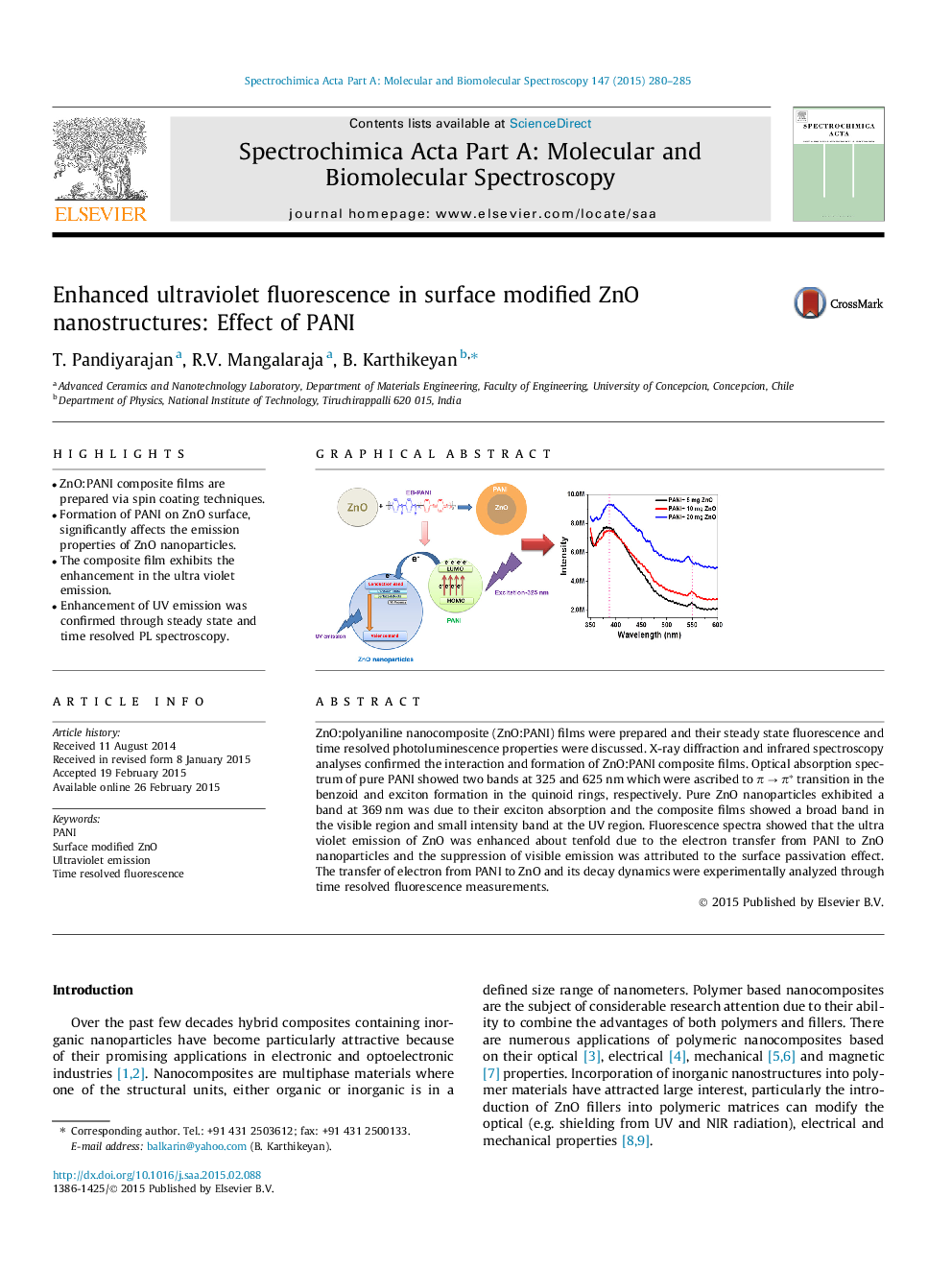| Article ID | Journal | Published Year | Pages | File Type |
|---|---|---|---|---|
| 1228826 | Spectrochimica Acta Part A: Molecular and Biomolecular Spectroscopy | 2015 | 6 Pages |
•ZnO:PANI composite films are prepared via spin coating techniques.•Formation of PANI on ZnO surface, significantly affects the emission properties of ZnO nanoparticles.•The composite film exhibits the enhancement in the ultra violet emission.•Enhancement of UV emission was confirmed through steady state and time resolved PL spectroscopy.
ZnO:polyaniline nanocomposite (ZnO:PANI) films were prepared and their steady state fluorescence and time resolved photoluminescence properties were discussed. X-ray diffraction and infrared spectroscopy analyses confirmed the interaction and formation of ZnO:PANI composite films. Optical absorption spectrum of pure PANI showed two bands at 325 and 625 nm which were ascribed to π → π∗ transition in the benzoid and exciton formation in the quinoid rings, respectively. Pure ZnO nanoparticles exhibited a band at 369 nm was due to their exciton absorption and the composite films showed a broad band in the visible region and small intensity band at the UV region. Fluorescence spectra showed that the ultra violet emission of ZnO was enhanced about tenfold due to the electron transfer from PANI to ZnO nanoparticles and the suppression of visible emission was attributed to the surface passivation effect. The transfer of electron from PANI to ZnO and its decay dynamics were experimentally analyzed through time resolved fluorescence measurements.
Graphical abstractFigure optionsDownload full-size imageDownload as PowerPoint slide
